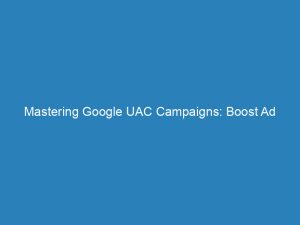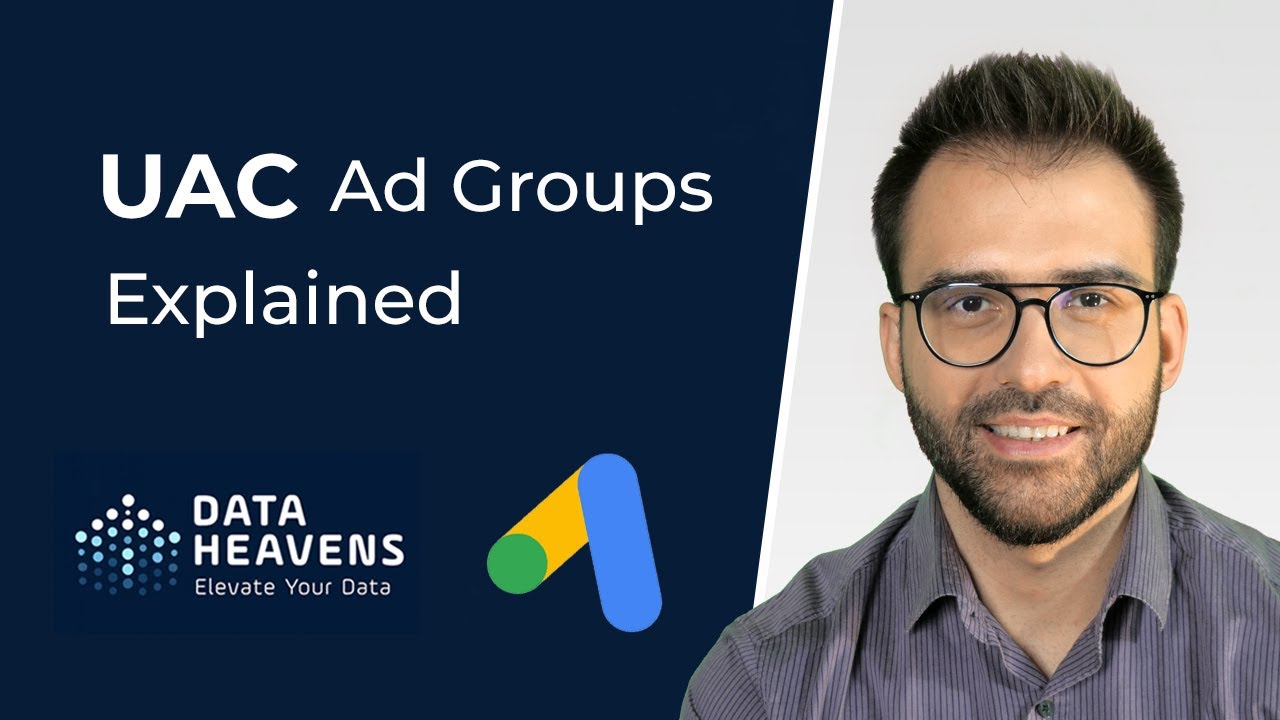In the ever-evolving digital landscape, staying on top of the latest trends and strategies is vital for businesses striving to succeed. One such trend that has revolutionized app marketing is Google’s Universal AppCampaigns (UACs).
However, brace yourself for a game-changing update as Google is renaming them to “AppCampaigns,” blending them seamlessly with their other potent campaigns in GoogleAds. Fear not, as this name change does not diminish their power.
With five distinct types catering to various app marketing goals, transitioning between these campaigns requires strategic finesse and impeccable budget allocation. So, fasten your seatbelts as we delve into the world of Google’s App Campaigns, where success awaits those who adapt wisely.
Table of Contents
- google uac campaigns
- Name Change: Universal App Campaigns To App Campaigns
- No Impact On Features Or Functionality
- App Campaigns Listed In Google Ads
- Five Types Of UACs For Specific App Marketing Goals
- Universal App Campaign For Installs: Acquiring New Users And App Installs
- Universal App Campaign For Installs Advanced: Targeting Users For In-App Actions
- UACs For Actions And Value: Unique Bidding Strategies And Budgets
- Strategically Transitioning Between UAC Campaigns
google uac campaigns
Google UAC campaigns, also known as App Campaigns, refer to a type of campaign offered by Google Ads for app marketing. The recent change in the name from “Universal App Campaigns” to “App Campaigns” does not impact the features or functionality of these campaigns.
App campaigns are now listed alongside other top-level campaign names in Google Ads. There are five different types of UACs, each designed to achieve specific goals in the app marketing funnel.
The first type is the Universal App Campaign for Installs, which focuses on acquiring new users and increasing app installs. The second type is the Universal App Campaign for Installs Advanced, which targets users likely to perform specific in-app actions.
Additionally, there are UACs for Actions and Value, each with their own bidding strategies and budgets. Transitioning between UAC campaigns should be done strategically, keeping specific goals in mind.
UACs leverage machine learning for optimization and bidding strategies. It is important to set daily budgets to ensure campaigns scale efficiently.
Proper budget allocation is crucial for the success of UAC campaigns.Key Points:
- Google UAC campaigns, also known as App Campaigns, are a type of campaign offered by Google Ads for app marketing.
- The recent change in the name from “Universal App Campaigns” to “App Campaigns” does not impact the features or functionality of these campaigns.
- App campaigns are now listed alongside other top-level campaign names in Google Ads.
- There are five different types of UACs, each designed to achieve specific goals in the app marketing funnel.
- UACs leverage machine learning for optimization and bidding strategies.
- Proper budget allocation is crucial for the success of UAC campaigns.
Sources
https://www.effectivespend.com/blog/types-of-google-universal-app-campaigns/
https://support.google.com/google-ads/answer/9256714?hl=en
https://support.google.com/google-ads/answer/6247380?hl=en
https://instapage.com/blog/universal-app-campaigns
Check this out:
💡 Pro Tips:
1. Use specific UAC types based on your campaign goals: Different UAC types are developed for specific goals in the app marketing funnel. Choose the right type, such as Universal App Campaigns for Actions or Value, to ensure your campaign aligns with your objectives.
2. Strategically plan the transition between UAC campaigns: When transitioning between UAC campaigns, it’s important to have specific goals in mind. Plan the transition strategically to ensure a smooth shift and maximize the success of your campaigns.
3. Harness the power of machine learning in UAC optimization: UAC campaigns rely on machine learning for optimization and bidding strategies. Leverage this technology to improve the performance of your campaigns and achieve better results.
4. Set daily budgets for quick and efficient scaling: To scale your UAC campaigns effectively, it’s essential to set daily budgets that allow for quick growth and efficient spending. Monitor your budgets regularly to ensure your campaigns are maximizing their potential.
5. Allocate budgets properly for UAC success: The success of UAC campaigns heavily depends on proper budget allocation. Allocate your budgets wisely based on the performance of each campaign and prioritize areas that yield the best results.
Name Change: Universal App Campaigns To App Campaigns
Google is making a significant change to its advertising platform by renaming “Universal App Campaigns” to “App Campaigns.” This new name aims to align with the broader concept of app marketing and to simplify the campaign naming structure within Google Ads. The name change, however, does not affect any features or functionality of the campaigns.
It is simply a rebranding effort to create a more cohesive and intuitive experience for advertisers.
No Impact On Features Or Functionality
It is important to note that despite the name change, the features and functionality of these campaigns will remain unchanged. Advertisers can still leverage the powerful tools and targeting options that were available under the Universal App Campaigns.
The transition to App Campaigns is mainly a cosmetic change and should not cause any disruption to ongoing campaigns or strategies.
App Campaigns Listed In Google Ads
With the name change, App Campaigns will now be listed alongside other top-level campaign names in the Google Ads interface. This reorganization will make it easier for advertisers to manage and access their app campaigns within the Google Ads platform.
By incorporating App Campaigns into the main campaign hierarchy, advertisers have a more streamlined workflow and can efficiently monitor and optimize their app marketing efforts.
Five Types Of UACs For Specific App Marketing Goals
There are five different types of Universal App Campaigns (now App Campaigns), each developed to achieve specific goals within the app marketing funnel. Advertisers can choose the most suitable campaign type based on their desired outcomes and target audience.
These campaign types provide tailored strategies and optimization techniques to drive the desired user actions and app performance.
Universal App Campaign For Installs: Acquiring New Users And App Installs
The first type of App Campaign focuses on acquiring new users and driving app installs. With this campaign type, advertisers can reach a wide audience and generate awareness for their app.
Advertisers can set specific targeting options to ensure they reach the right audience based on demographics, interests, and behavior. By leveraging Google’s machine learning algorithms, the campaign optimizes bids and placements to maximize app installs.
This post updated with new ad network performance data.
Universal App Campaign For Installs Advanced: Targeting Users For In-App Actions
The Universal App Campaign for Installs Advanced offers more sophisticated targeting options, allowing advertisers to focus on users who are likely to perform specific in-app actions. This campaign type is ideal for advertisers who want to drive engagement, such as completing a transaction, reaching a specific level within a game, or subscribing to a service.
Advertisers can define specific in-app events and let Google’s machine learning technology find users who are most likely to perform those actions.
UACs For Actions And Value: Unique Bidding Strategies And Budgets
In addition to the campaigns focused on installs, there are also Universal App Campaigns designed for driving specific actions and maximizing app value. These campaigns have their own unique bidding strategies and budgets.
Advertisers can leverage UACs for Actions to drive specific user interactions within the app, such as registrations, purchases, or bookings. On the other hand, UACs for Value allows advertisers to maximize the lifetime value of their customers by targeting high-value users and optimizing bids accordingly.
Strategically Transitioning Between UAC Campaigns
Transitioning between different UAC campaigns should be approached strategically. Advertisers need to have specific goals in mind and understand the different benefits and targeting options each campaign type offers.
By analyzing campaign performance, advertisers can identify if a campaign is underdelivering or if there are opportunities for optimization within the existing campaign. Transitioning between campaigns should be driven by data and the aim to improve overall campaign performance.
Mastering Google UAC campaigns requires a comprehensive understanding of the different campaign types, bidding strategies, and optimization techniques available. Advertisers must ensure proper budget allocation, set daily budgets to scale campaigns effectively, and leverage Google’s machine learning capabilities to their advantage.
By embracing the new name change to App Campaigns and staying informed about best practices, advertisers can boost their ad performance effortlessly and achieve their app marketing goals.
Buy Traffic • Performance Marketing Tips • Native Ad Network












